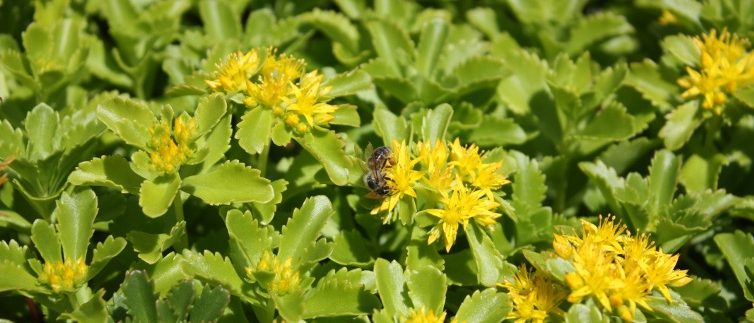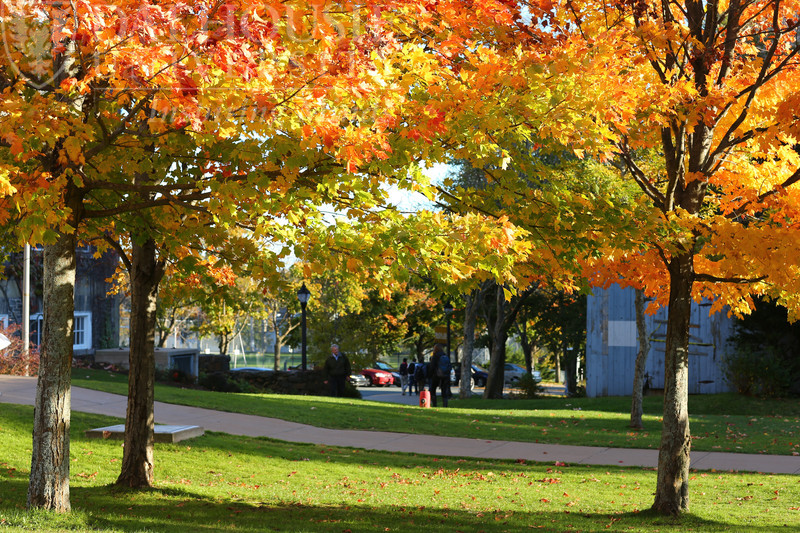
Dal's Natural Environment Plan
Dalhousie University’s natural environment is made up of university owned trees, shrubs, lawns, ornamental gardens, food gardens, green roofs, naturalized areas, stormwater recharge areas, and turf.
At Dal, we strive to recognize and support the natural environment as important and valued space on university campuses. The crucial campus and societal value that natural spaces provide is significant — from social and health benefits to ecological and economic benefits.
An accessible campus landscape provides an ideal space for students, faculty, staff, neighbours, and the public to gather, socialize, relax, study, connect with nature, and show respect to Indigenous culture.
To guide the management of campus landscapes, Dalhousie has a Natural Environment Plan that outline standards for the management of the campus environment, including a diameter tree replacement policy, approved plant lists, and standards for stormwater management.
Using the Natural Environment Plan as well as the Campus Master Plans and Climate Change Plan, Dalhousie is taking steps to conserve the natural environment and promote the benefits of natural, landscaped, and green solutions. The plan reflects priority areas from local, regional, national and international requirements, standards and certifications.
Dal is a designated Bee City Campus, showcasing a commitment to creating and maintaining natural environments to support native pollinator plants and species.
Additional guidelines and resources
In addition to the Natural Environment Plan, other guidelines and resources should be consulted to support planning, design, and development initiatives.
As part of Dalhousie’s Design Guidelines, the Natural Environment Guidelines provide assistance to consultants during the planning and design phases of the University’s expansion and renovations.
Species at Risk assessments [PDF-844KB] planning, and identification all help to guide plantings and protection efforts.
Campus naturalization
In combination with landscape naturalization efforts, restoring, creating, and protecting habitats will be vital to the long-term functioning of Dal’s landscape. There are only a few landscapes on the Dalhousie campus where natural regeneration and succession of vegetation is allowed to occur, free of pressures like vandalism and construction.
What is naturalization?
Naturalization is the process of converting highly managed landscapes, such as a lawn, into more naturally functioning landscapes. Both existing and new landscapes can be naturalized by reducing management inputs and by encouraging the colonization of native plant and wildlife species.
Naturalization examples on campus
In the interest of increasing campus naturalization, two areas in particular have been identified as benefiting from this type of practice:
- Sherrif Hall oak stand: a remnant forest from before the development of the Studley campus. This oak stand contains one of Halifax’s oldest trees, a 250-300 year old red oak (Quercus rubra);
- The Cobequid trail: along the southern edge of the Agricultural Campus. A partnership between the Municipality of Colchester and Dalhousie University has provided an opportunity for a trail system through the naturalized slope overlooking the Salmon River.
- Dalhousie is a designated Bee City Campus, with a commitment to creating and maintaining pollinator habitat across our campus, providing education to the community, and celebrating our native pollinators. More information about our pollinator habitat is coming soon.
Naturalization practices
A number of practices have been identified to promote regeneration and to bring attention to these sites:
Fencing-off valuable species as recognized by the grounds supervisor
Phasing out invasive species (Norway maple);
Alleviating site compaction by using aeration techniques around valuable trees (water and air injection and radial trenching);
Modifying management practices (reduce or eliminate mowing in certain areas);
Allowing understory regeneration or planting selected native species;
Signaling cues of care to the campus population demonstrating that this project is intentional and not a forgotten space (signage, fencing, seating, and pathways).
Tracking Species at Risk and improving campus conditions where applicable
Stormwater management
Recognizing Dalhousie’s natural environment as ‘green Infrastructure’ highlights the importance of the natural environment in management decisions. Vegetation and other forms of low impact development will be used to slow the flow and restore the infiltration of stormwater.
What is stormwater?
Stormwater is the water that flows across impervious surfaces (e.g. streets, sidewalks, rooftops) without percolating into the ground, and is recognized as a significant polluter of water bodies.
Developing ways to retain, filter, infiltrate, and re-use stormwater is something Dalhousie University has been implementing as part of new development and renovation projects.
Stormwater management on campus
Examples of campus stormwater management include:
A rain garden at the corner of Coburg and Oxford and both a rain garden and permeable bike corral in the Killam Loop;
Vegetative swales on River Road (AC) and at the Steele Ocean Sciences Building (SOSB) and permeable concrete at the SOSB;
Commercial building rain cisterns (rain water collection for re-use in washrooms) in the Mona Campbell Building, Lemarchant Place, and Richard Murrary Design Building;
Green roofs on many Dal buildings including the Mona Campbell, Henry Hicks, Life Science Centre, Wallace McCain Learning Commons, and Marion McCain Arts & Social Sciences building;
And stormwater management mapping as well as ongoing stormwater management research.
